-
 Bitcoin
Bitcoin $76,444.7530
-3.77% -
 Ethereum
Ethereum $1,473.8355
-5.46% -
 Tether USDt
Tether USDt $0.9991
-0.08% -
 XRP
XRP $1.7965
-5.51% -
 BNB
BNB $553.4919
-0.36% -
 USDC
USDC $0.9999
-0.02% -
 Solana
Solana $105.2981
-1.74% -
 TRON
TRON $0.2303
0.81% -
 Dogecoin
Dogecoin $0.1422
-4.62% -
 Cardano
Cardano $0.5587
-4.41% -
 UNUS SED LEO
UNUS SED LEO $8.9866
1.01% -
 Toncoin
Toncoin $2.9933
-4.74% -
 Chainlink
Chainlink $10.9113
-4.81% -
 Stellar
Stellar $0.2215
-4.76% -
 Avalanche
Avalanche $16.1163
-3.29% -
 Sui
Sui $1.9371
-3.89% -
 Shiba Inu
Shiba Inu $0.0...01065
-6.69% -
 Hedera
Hedera $0.1469
-3.29% -
 MANTRA
MANTRA $6.2058
-1.53% -
 Dai
Dai $1.0000
0.01% -
 Bitcoin Cash
Bitcoin Cash $269.3457
-2.08% -
 Polkadot
Polkadot $3.3773
-5.87% -
 Litecoin
Litecoin $69.2204
-2.50% -
 Ethena USDe
Ethena USDe $0.9986
-0.01% -
 Bitget Token
Bitget Token $4.0180
-3.25% -
 Pi
Pi $0.5649
-4.50% -
 Hyperliquid
Hyperliquid $11.1928
-2.80% -
 Monero
Monero $195.3885
-4.41% -
 OKB
OKB $50.9235
-0.59% -
 Uniswap
Uniswap $4.7688
-6.95%
How does NFT Interoperability enable cross-platform NFT usage?
NFT interoperability, using protocols like ERC-721 and bridges, allows NFTs to move between blockchains, increasing accessibility and utility, despite challenges like scalability and security.
Mar 02, 2025 at 12:36 pm
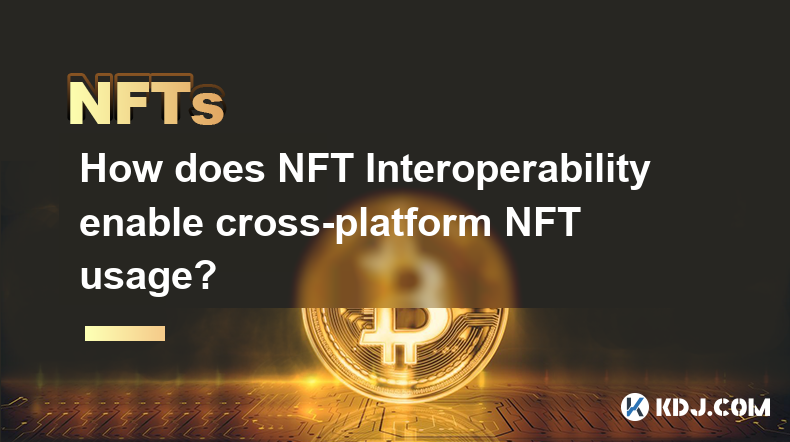
Key Points:
- NFT interoperability breaks down silos between different blockchains and marketplaces.
- Cross-chain protocols and standards like ERC-721 and ERC-1155 are crucial for enabling interoperability.
- Wrapped NFTs and bridges facilitate the movement of NFTs across different platforms.
- Challenges remain, including scalability issues, security risks, and regulatory uncertainties.
- The future of NFT interoperability lies in the development of more robust and user-friendly solutions.
How Does NFT Interoperability Enable Cross-Platform NFT Usage?
The world of Non-Fungible Tokens (NFTs) is currently fragmented. NFTs exist on various blockchains (Ethereum, Solana, Polygon, etc.), each with its own ecosystem and marketplace. This lack of interoperability limits the potential of NFTs by restricting their use to a single platform. NFT interoperability aims to solve this problem, allowing NFTs to seamlessly transition between different platforms and blockchains. This unlocks new opportunities for creators, collectors, and developers.
One of the key mechanisms enabling this is the development of cross-chain protocols. These protocols act as bridges, allowing NFTs to be transferred between different blockchains while maintaining their unique identity and metadata. This is often achieved through the process of "wrapping" an NFT. This involves creating a token representing the original NFT on a new blockchain, while the original remains secured on its original chain.
Standards like ERC-721 and ERC-1155 (Ethereum Request for Comments) play a vital role. ERC-721 defines the standard for unique, non-fungible tokens, while ERC-1155 allows for both fungible and non-fungible tokens within a single contract, increasing efficiency. These standards provide a common language for different platforms to understand and interact with NFTs, facilitating interoperability.
However, achieving seamless cross-platform NFT usage isn't without its challenges. Scalability remains a major hurdle. Transferring NFTs across chains can be slow and expensive, especially during periods of high network congestion. Security is another critical concern. Cross-chain bridges are potential targets for hackers, and any vulnerability could lead to significant losses. Regulatory uncertainty also adds complexity, as the legal framework surrounding cross-chain NFT transfers is still evolving.
Methods for Achieving NFT Interoperability:
Several approaches are being employed to achieve greater NFT interoperability:
- Wrapped NFTs: This involves creating a representation of an NFT on a different blockchain. The original NFT remains on its original blockchain, acting as collateral.
- Cross-Chain Bridges: These are protocols that allow the transfer of assets, including NFTs, between different blockchains. They often involve locking the original NFT on one chain and minting a corresponding token on another.
- NFT Aggregators: These platforms aggregate NFTs from multiple marketplaces, allowing users to browse and potentially trade NFTs across different platforms without needing to switch between them.
- Interoperability Protocols: These are protocols designed specifically to facilitate the seamless transfer and interaction of NFTs across various blockchains and platforms. They often leverage standards like ERC-721 and ERC-1155.
Specific Examples of Interoperability Solutions:
Several projects are actively working on improving NFT interoperability. These include projects focusing on creating more efficient cross-chain bridges and developing universal NFT standards. Some projects utilize sidechains or layer-2 scaling solutions to reduce transaction fees and improve speed. Others are focused on creating more user-friendly interfaces that simplify the process of transferring NFTs across different platforms.
Challenges and Future Directions:
While significant progress is being made, significant hurdles remain. These include the need for more efficient and secure cross-chain bridges, the development of more robust and widely adopted standards, and addressing scalability limitations. The legal and regulatory landscape surrounding cross-chain NFT transfers also needs further clarification.
The future of NFT interoperability hinges on overcoming these challenges. A more interconnected NFT ecosystem will unlock greater utility for NFTs, fostering broader adoption and innovation within the cryptocurrency space. Improved user experience is also paramount for mainstream adoption. Simplified processes and intuitive interfaces will be key to making cross-chain NFT transfers accessible to a wider audience.
Frequently Asked Questions:
Q: What are the benefits of NFT interoperability?
A: NFT interoperability unlocks greater liquidity, expands the potential audience for NFTs, allows for more complex and interesting applications, and facilitates the creation of truly decentralized NFT ecosystems.
Q: How secure is transferring NFTs across different blockchains?
A: Security is a major concern. The security of cross-chain transfers depends heavily on the security of the specific bridge or protocol used. It's crucial to choose reputable and well-audited solutions.
Q: What are the costs associated with transferring NFTs across chains?
A: Costs vary significantly depending on the specific blockchain, the bridge used, and network congestion. Gas fees (transaction fees) can be substantial, especially on networks like Ethereum.
Q: Will all NFTs be interoperable in the future?
A: While the goal is broader interoperability, complete interoperability for all NFTs across all platforms might not be fully realized in the short term. Technical and practical limitations, as well as the need for standardization, remain.
Q: What role do standards like ERC-721 and ERC-1155 play in NFT interoperability?
A: These standards provide a common framework for representing and interacting with NFTs, enabling different platforms and blockchains to understand and communicate with each other. They are fundamental to the development of interoperable NFT solutions.
Disclaimer:info@kdj.com
The information provided is not trading advice. kdj.com does not assume any responsibility for any investments made based on the information provided in this article. Cryptocurrencies are highly volatile and it is highly recommended that you invest with caution after thorough research!
If you believe that the content used on this website infringes your copyright, please contact us immediately (info@kdj.com) and we will delete it promptly.
- "Cardano (ADA) Price Could Dip Below $0.60, Following Previous Market Cycle"
- 2025-04-09 05:10:12
- BONK, the well-known meme coin, has risen over 35% in the last week, attracting meme coin investors in the market. So, what caused this rally?
- 2025-04-09 05:10:12
- Bitcoin (BTC) Investors May Not Exactly Feel It, but BTC Has Been a Relatively Good Bet
- 2025-04-09 05:05:12
- Donald's Bitcoin (DONBTC) Could Turn Early Investors into Multi-Millionaires, Like Shiba Inu (SHIB) and Dogecoin (DOGE) Did
- 2025-04-09 05:05:12
- 6 Upcoming Kraken Listings That Could Be the Next Big Thing in Crypto
- 2025-04-09 05:00:13
- COTI Unveils New Privacy-Focused Blockchain to Reshape Web3 Transactions
- 2025-04-09 05:00:13
Related knowledge
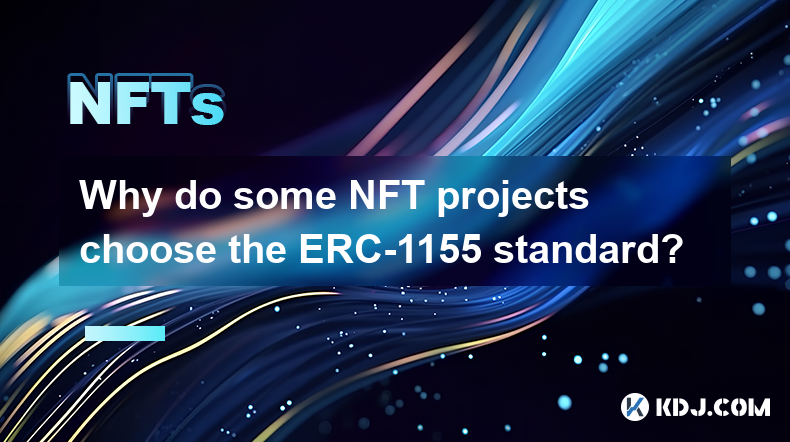
Why do some NFT projects choose the ERC-1155 standard?
Apr 08,2025 at 11:49am
The world of Non-Fungible Tokens (NFTs) has seen a significant rise in popularity and innovation, leading to the development of various token standards. Among these, the ERC-1155 standard has emerged as a versatile and efficient choice for many NFT projects. This article delves into the reasons why some NFT projects opt for the ERC-1155 standard, explor...
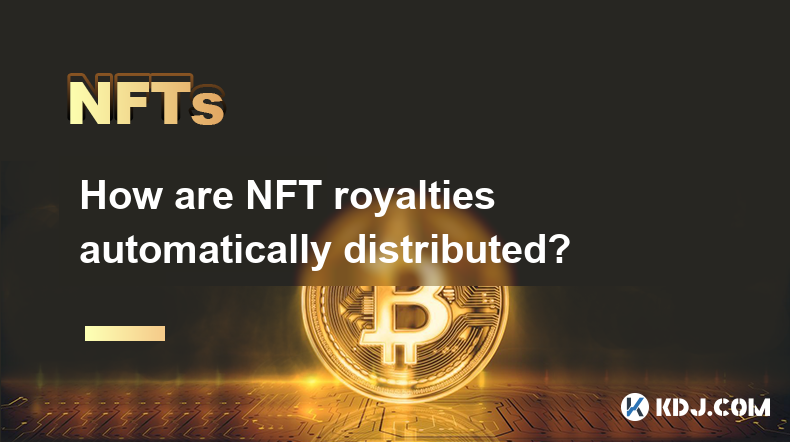
How are NFT royalties automatically distributed?
Apr 08,2025 at 08:14pm
NFTs, or Non-Fungible Tokens, have revolutionized the digital art and collectibles market by providing a way to prove ownership and authenticity of digital assets. One of the most intriguing features of NFTs is the ability to automatically distribute royalties to creators whenever their work is resold. This article will delve into the mechanisms behind ...
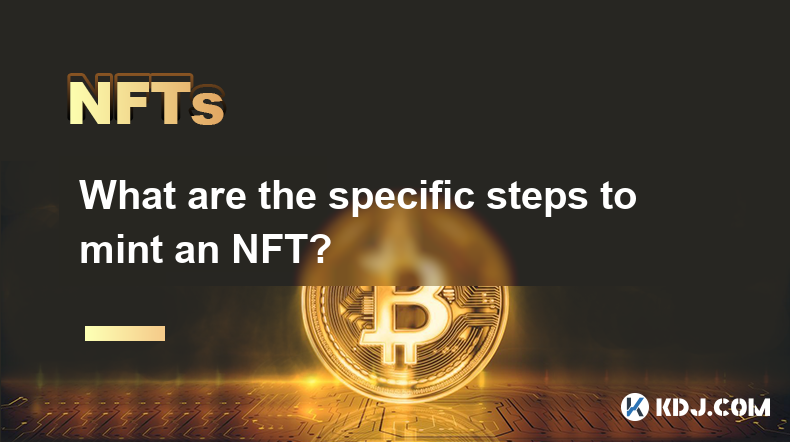
What are the specific steps to mint an NFT?
Apr 08,2025 at 05:22pm
Introduction to NFT MintingMinting an NFT, or Non-Fungible Token, involves creating a unique digital asset on a blockchain. This process allows artists, creators, and collectors to tokenize their work, ensuring its authenticity and ownership. Understanding the steps to mint an NFT is crucial for anyone looking to enter the world of digital collectibles....
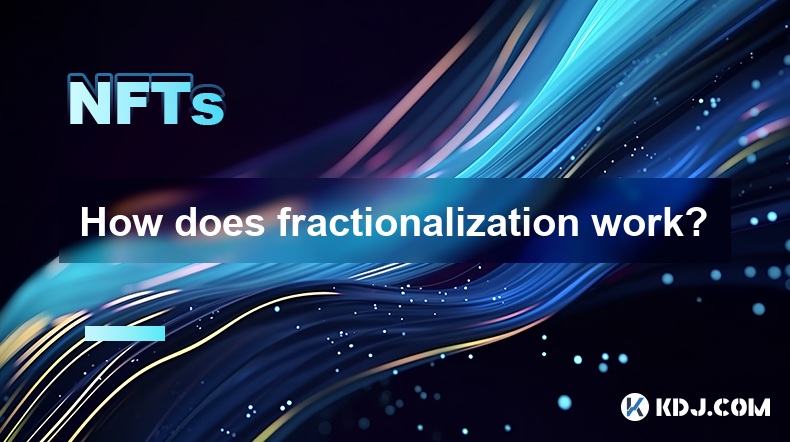
How does fractionalization work?
Apr 08,2025 at 07:42pm
How does fractionalization work? Fractionalization in the context of cryptocurrencies and blockchain technology refers to the process of dividing a single asset into smaller, more manageable pieces. This concept has revolutionized the way investors and users interact with high-value assets, making them more accessible and liquid. In this article, we wil...
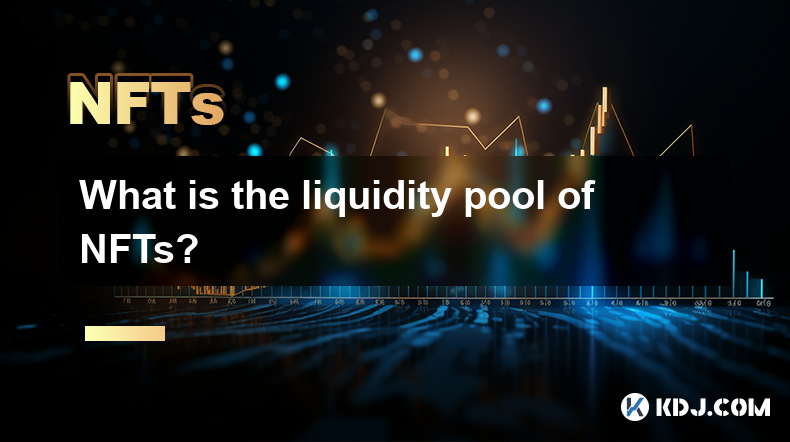
What is the liquidity pool of NFTs?
Apr 08,2025 at 05:35pm
The concept of liquidity pools has become increasingly popular within the cryptocurrency and decentralized finance (DeFi) ecosystems. While traditionally associated with token swaps, the idea has extended to the realm of Non-Fungible Tokens (NFTs). Liquidity pools for NFTs are mechanisms that facilitate the trading and exchange of these unique digital a...

What are the common ways to participate in the NFT whitelist?
Apr 08,2025 at 08:28pm
Participating in an NFT whitelist can be an exciting opportunity for enthusiasts and investors looking to secure their spot in upcoming NFT drops. The whitelist often grants early access or special privileges, such as lower minting fees or guaranteed allocations. Here, we will explore the common ways to participate in an NFT whitelist, detailing each me...

Why do some NFT projects choose the ERC-1155 standard?
Apr 08,2025 at 11:49am
The world of Non-Fungible Tokens (NFTs) has seen a significant rise in popularity and innovation, leading to the development of various token standards. Among these, the ERC-1155 standard has emerged as a versatile and efficient choice for many NFT projects. This article delves into the reasons why some NFT projects opt for the ERC-1155 standard, explor...

How are NFT royalties automatically distributed?
Apr 08,2025 at 08:14pm
NFTs, or Non-Fungible Tokens, have revolutionized the digital art and collectibles market by providing a way to prove ownership and authenticity of digital assets. One of the most intriguing features of NFTs is the ability to automatically distribute royalties to creators whenever their work is resold. This article will delve into the mechanisms behind ...

What are the specific steps to mint an NFT?
Apr 08,2025 at 05:22pm
Introduction to NFT MintingMinting an NFT, or Non-Fungible Token, involves creating a unique digital asset on a blockchain. This process allows artists, creators, and collectors to tokenize their work, ensuring its authenticity and ownership. Understanding the steps to mint an NFT is crucial for anyone looking to enter the world of digital collectibles....

How does fractionalization work?
Apr 08,2025 at 07:42pm
How does fractionalization work? Fractionalization in the context of cryptocurrencies and blockchain technology refers to the process of dividing a single asset into smaller, more manageable pieces. This concept has revolutionized the way investors and users interact with high-value assets, making them more accessible and liquid. In this article, we wil...

What is the liquidity pool of NFTs?
Apr 08,2025 at 05:35pm
The concept of liquidity pools has become increasingly popular within the cryptocurrency and decentralized finance (DeFi) ecosystems. While traditionally associated with token swaps, the idea has extended to the realm of Non-Fungible Tokens (NFTs). Liquidity pools for NFTs are mechanisms that facilitate the trading and exchange of these unique digital a...

What are the common ways to participate in the NFT whitelist?
Apr 08,2025 at 08:28pm
Participating in an NFT whitelist can be an exciting opportunity for enthusiasts and investors looking to secure their spot in upcoming NFT drops. The whitelist often grants early access or special privileges, such as lower minting fees or guaranteed allocations. Here, we will explore the common ways to participate in an NFT whitelist, detailing each me...
See all articles






















































































